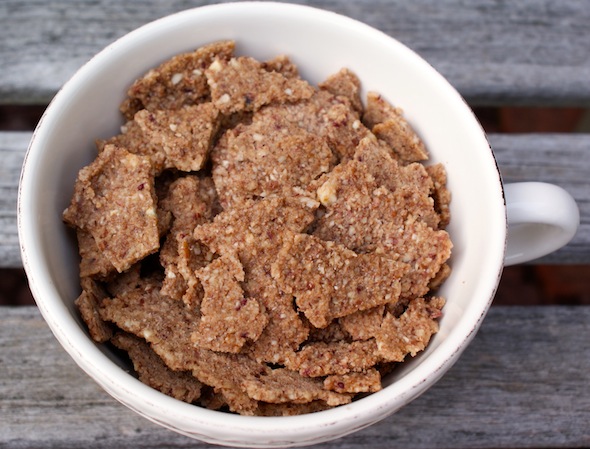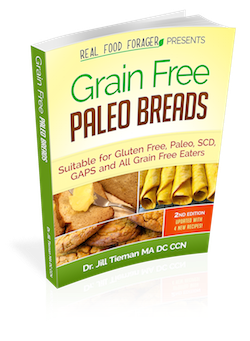One of the first “health foods” I started eating was granola. Talk about being crunchy. It was perfect for me. It had plenty of the carbs that I was craving and it was said to be good for you. Little did I know that it would lead me to an overgrowth of Candida that would plague me for years.
Granola is made with rolled oats
Typically granola is made with rolled oats which simply means that the oat grain is rolled flat. That does nothing to help you digest it. There are also quick oats which are just ground up oat grains to help them cook fast. Then there are steel cut oats which are oat grains chopped up, also to help cook faster.
Are oats a gluten grain?
The answer is no. There is no gluten in oats. However it is included in the list of gluten grains because it is usually contaminated with gluten from other grains. For someone with a molecular sensitivity to gluten, this would be a problem. So oats are generally off limits for celiacs unless they get gluten-free oats and then they still may have a problem. Many celiacs need to go beyond gluten-free — they need to go grain-free.
Another problem comes from the fact that most commercial preparations of oats and grains in general, do not include soaking, sprouting or sour dough fermentation which helps remove the anti-nutrients in grains.
Other ingredients in granola
Even the health food companies making a natural granola use additives that will harm you. By this time you know that natural can mean any number of chemical additives disguised under the umbrella term of natural.
Conventional granola includes sugar, brown sugar, vegetable oil, nuts (that also have not been properly prepared by soaking) and some dried fruit which may be dried with sulfa or glycerin.
Even this brand, which advertises itself as very natural, has the following ingredients:
Whole Grain Oats, Honey, Canola Oil, Almonds, Raisins (Raisins, Glycerin), Sweetened Dried Cranberries (Cranberries, Sugar, Glycerin, Sunflower Oil), Coconut, Walnuts, Pecans, Maple Syrup, Oat Bran, Ground Flax Seed, Toasted Sesame Seeds
The second ingredient is honey and is it also sweetened with dried fruit that has sugar added, raisins and maple syrup, so it is very sweet. But this version is pretty good compared to other brands of granola which have tons more sugar and other chemicals.
Yet even here, there are problems. The problem is that the whole grain oat, which most people would consider healthy, is really hard to digest, especially because it is whole grain and the bran is where all the anti-nutrients like lectins and phytic acid reside. I’ve talked about those substances is previous posts so you probably know that they are not gut friendly.
Additionally, the nuts in commercial granola are most assuredly not soaked and dehydrated.
Don’t get me started on the canola oil, which everyone thinks (not you of course) is very healthy.
How granola feeds yeast and other harmful bacteria
As you can see from the discussion above, the conventional granola is full of extremely hard to digest ingredients; from oats to nuts. This creates fertile ground for sugar seeking bacteria and yeast to multiply and prosper in an unsuspecting person.
Of the three macronutrients (proteins, carbohydrates and fats), carbohydrates are actually the hardest to digest. Carbohydrates are also the main food for the intestinal flora. When they are not digested properly, they stay in the intestines and become food for the pathogenic bacteria and yeast.In some cases it is because of the improper preparation of foods — in others it is because of dysbiosis in the gut of the person.
A vicious cycle
These pathogens can then proliferate and overpower the numbers of beneficial bacteria and yeast in the gut. When this happens, a vicious cycle begins. Undigested carbohydrates become food for pathogens, and these pathogens multiply and take a strong residence in the gut. These pathogens give off toxic acidic byproducts which can damage the delicate lining of the intestinal tract and cause symptoms such as, excess mucous (in an attempt by the goblet cells to protect the epithelium against toxins), excess gas, diarrhea, constipation, blood in the stools, etc.
Any damage to the lining of the digestive tract also causes a loss of the digestive enzymes that are embedded in the lining. Therefore, digestion is further compromised. This can eventually develop into a disease process. If the carbohydrates are continuously eaten, it drives the cycle, and the symptoms as well as the intestinal damage gets worse and worse.
Some people can have this vicious cycle going on and not even know it because their symptoms are not related to the digestive tract. For example, sinus problems and migraines can be related to this vicious cycle of undigested carbohydrates feeding the pathogenic organisms. Skin problems, learning problems, joint problems, can also be related to this problem in the digestive tract.
I was that person. I ate lots of granola, along with other very difficult to digest foods like soy (yes I was enthralled with soy until I read Kaayla Danial’s book The Whole Soy Story). These foods destroyed my intestine and allowed Candida yeast to flourish.
Conventional granola is essentially sugar
While there may not be a lot of sugar in the ingredient list of granola, the oats digest very quickly into sugar (just like whole wheat products) and cause a spike in blood glucose. This is bad for an individual’s sugar metabolism. Additionally, the sugar will feed the yeast and bad bacteria.
Grains disrupt proper blood sugar regulation
Although whole grain flours are touted as being healthier, they actually get digested just as quickly as refined flours and are considered to be highly glycemic. Oats fall into this category as well.That is, they go into the blood stream as quickly as a candy bar. A diet with a lot of grains will constantly cause spikes and drops in blood sugar and insulin. Over time this can lead to prediabetes and diabetes.
These constant hormonal shifts also stress the adrenal glands in a negative way. Additionally, sugar feeds cancer.
The key to healing
Removing the offending food from the diet is the key to healing. The medical approach is to manage the symptoms with medications. The holistic approach is to tackle the root cause of the problem and remove any interference to healing.
Many people can have an overgrowth of Candida albicans yeast and this may be a cause of strong cravings. Candida albicans is also implicated in sinus problems and of course vaginal yeast infections in women.These yeasts feed upon sugar and undigested carbohydrates.
The solution is a grain-free diet
The solution is to follow a grain-free diet and some people even need to follow a starch and sugar-free diet like SCD or GAPS.
Make your own grain-free granola
In my online class, go grain-free, I share how I make a wildy delicious grain-free granola that has a low glycemic index because it is made with nuts and is low in natural sugar. It is easy to digest because the nuts have been properly prepared. I share how to make a batch that can be stored and used for a long time.
Get Started Today
You may already be on the GAPS diet, or SCD (Specific Carbohydrates Diet), the Paleo, Primal diets or other healing diet. You may be on a gluten-free diet and are still not feeling better — or you may be thinking about starting.
Click here to see the full class schedule
Sign Up Now
This self paced class has just started and you will immediately receive the first lesson. After that, once a week you will receive the new lesson on Wednesdays for a total of 12 lessons. You can go back again and again to the video lessons and recipes and learn at your own pace.
You can view these videos anytime and anywhere — in the comfort of your own home and in your pj’s if you care to! If you are not completely satisfied you may return the class for a full refund within 30 days — no questions asked. Click here for the refund policy.
There is a steep discount right now! Hurry!
Click here to register
Related posts:
Leaky Gut: Why It Happens and What To Do About It
How To Mend a Broken Gut
Kellogg Aims To Smother the World in Cereal Grains
Cancer, Sugar and the Low Carbohydrate Diet
How That Morning Cereal Can Be Making You Sick
Why I Would NEVER Eat Conventional Corn












